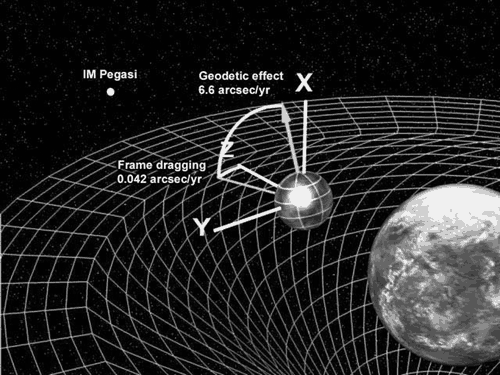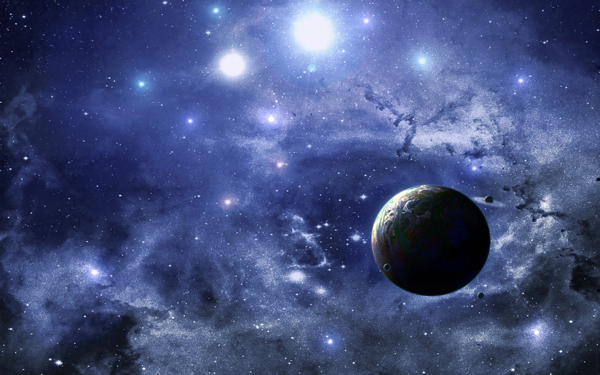Universe
The Evolution of the Universe
Some 15 billion years ago the universe emerged from a hot, dense sea of matter and energy. As the cosmos expanded and cooled, it spawned galaxies, stars, planets and life.
At a particular instant roughly 15 billion years ago, all the matter and energy we can observe, concentrated in a region smaller than a dime, began to expand and cool at an incredibly rapid rate. By the time the temperature had dropped to 100 million times that of the sun’s core, the forces of nature assumed their present properties, and the elementary particles known as quarks roamed freely in a sea of energy. When the universe had expanded an additional 1,000 times, all the matter we can measure filled a region the size of the solar system. At that time, the free quarks became confined in neutrons and protons. After the universe had grown by another factor of 1,000, protons and neutrons combined to form atomic nuclei, including most of the helium and deuterium present today. All of this occurred within the first minute of the expansion. Conditions were still too hot, however, for atomic nuclei to capture electrons. Neutral atoms appeared in abundance only after the expansion had continued for 300,000 years and the universe was 1,000 times smaller than it is now. The neutral atoms then began to coalesce into gas clouds, which later evolved into stars. By the time the universe had expanded to one fifth its present size, the stars had formed groups recognizable as young galaxies. When the universe was half its present size, nuclear reactions in stars had produced most of the heavy elements from which terrestrial planets were made. Our solar system is relatively young: it formed five billion years ago, when the universe was two thirds its present size. Over time the formation of stars has consumed the supply of gas in galaxies, and hence the population of stars is waning. Fifteen billion years from now stars like our sun will be relatively rare, making the universe a far less hospitable place for observers like us. Our understanding of the genesis and evolution of the universe is one of the great achievements of 20th-century science. This knowledge comes from decades of innovative experiments and theories.

Modern telescopes on the ground and in space detect the light from galaxies billions of light-years away, showing us what the universe looked like when it was young. Particle accelerators probe the basic physics of the high-energy environment of the early universe. Satellites detect the cosmic background radiation left over from the early stages of expansion, providing an image of the universe on the largest scales we can observe. Our best efforts to explain this wealth of data are embodied in a theory known as the standard cosmological model or the big bang cosmology. The major claim of the theory is that in the largescale average the universe is expanding in a nearly homogeneous way from a dense early state. At present, there are no fundamental challenges to the big bang theory, although there are certainly unresolved issues within the theory itself. Astronomers are not sure, for example, how the galaxies were formed, but there is no reason to think the process did not occur within the framework of the big bang. Indeed, the predictions of the theory have survived all tests to date. Yet the big bang model goes only so far, and many fundamental mysteries remain. What was the universe like before it was expanding? (No observation we have made allows us to look back beyond the moment at which the expansion began.) What will happen in the distant future, when the last of the stars exhaust the supply of nuclear fuel? No one knows the answers yet. Our universe may be viewed in many lights—by mystics, theologians, philosophers or scientists. In science we adopt the plodding route: we accept only what is tested by experiment or observation. Albert Einstein gave us the now well-tested and accepted Theory of General Relativity, which establishes the relations between mass, energy, space and time. There are Some Image given below.

Shapes of the Universe
There are basically three possible shapes to the Universe; a flat Universe (Euclidean or zero curvature), a spherical or closed Universe (positive curvature) or a hyperbolic or open Universe (negative curvature). Note that this curvature is similar to spacetime curvature due to stellar masses except that the entire mass of the Universe determines the curvature. So a high mass/high energy Universe has positive curvature, a low mass/low energy Universe has negative curvature.

Curvature of Measuring:
Measuring the curvature of the Universe is doable because of ability to see great distances with our new technology. On the Earth, it is difficult to see that we live on a sphere. One stands on a tall mountain, but the world still looks flat. One can see a ship come over the horizon, but that was thought to be atmospheric refraction for a long time. Our current technology allows us to see over 80% of the size of the Universe, sufficient to measure curvature. Any method to measure distance and curvature requires a standard `yardstick', some physical characteristic that is identifiable at great distances and does not change with lookback time.

End of the Universe
The universe is finite but has no end or boundary, because that would mean there was somewhere beyond the end... And wherever you are, you are in the centre of an observable universe defined by the Hubble radius, but a region where the galaxies stop or where there would be a barrier of some kind marking the end of space. But nobody knows for sure.
there are three possible ways of the end of the the universe:
1.The Big Rip
The Big Rip, if it does happen, will destroy the universe 22 billion years from nowJEREMY TEAFORD / VANDERBILT The first theory claims the Universe will end with a Big Rip, as the pull of the Universe's expansion gets stronger than the gravity it contains. This would tear apart galaxies, followed by black holes, stars and even our own planet.

The Big Crunch
Another theory about the potential end of the Universe relates to the so-called 'Big Crunch'.
This would ultimately cause the Universe to shrink and cause stars, planets and entire galaxies to collide into each other and the Universe would, for all intents and purposes, collapse in on itself.

The Big Freeze
It states that the Universe could end due to a Big Freeze. Also somewhat conversely called 'Heat Death', this scenario is believed to be the most likely according to what we already know about physics and the Universe.
